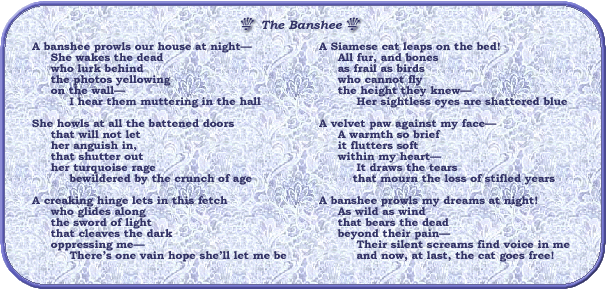The Mexican god Tezcatlipoca occasionally manifests in a particularly nightmarish form as a bogie known as the ‘Night Axe’, a figure with a dreadful wound in his chest that thuds open and shut with the sound of someone chopping wood. Anyone confronted with the god in this form seems to have two choices, either to die of fright on the spot or to reach into the monstrous wound and grab hold of the beating heart—in which case it becomes incumbent upon the god to grant you a boon. This, to me, sums up the essence of nightmares. At times we merely ‘die of the fright of them’, which is to suggest that perhaps something might have lived, had we been able to stand firm to the fear. And yet at other times we do seem able to grab hold of their boon-giving component.
In the summer of 1976 I returned to my family home for rest and recuperation following the trial of writing up a thesis. During the preceding year I had suffered from a combination of insomnia and night terrors, which culminated in a series of life-changing death dreams. These dreams led me to the work of Carl Jung, as well as to a complete change in direction away from a career in scientific research into a lengthy private study of dreams, shamanic experiences and the views about life expressed in a variety of religions.
During the two months I spent at home that summer I was plagued by all kinds of nightmares. One particularly terrifying night I lay in bed listening to the cat out in the hallway fighting with a ghost. My mother’s aged Siamese cat had become as frail as a will-o’-the-wisp. Yet she seemed possessed by an uncanny voice that would caterwaul through the night at unbelievable intensity and volume. It was only many years later that I realised that this had been a visitation experience, that my perception of the spirit in the hallway ‘scaring the cat’ had been a projection of an ancestral madwoman: a numen of creativity outcast and locked away by generations of my family inhibited by societal constraints.

All Hallows Eve (October 31) is traditionally a time when the boundaries between worlds buckle and bend to let all manner of uncanny visitors into our so-called ‘reality’. Perhaps the side of us attuned to the needs of these outcasts—and possibly even dimly aware of our intimate relationship to them—developed the rituals of laying out food and the other offerings that are associated with Halloween and the ‘Day of the Dead’.
So perhaps it is a particularly good time of year to look back at some of our old nightmares. And to reconsider what boons—amidst the dread and terror—they might have been trying to offer to us.
Nora Leonard, 2000